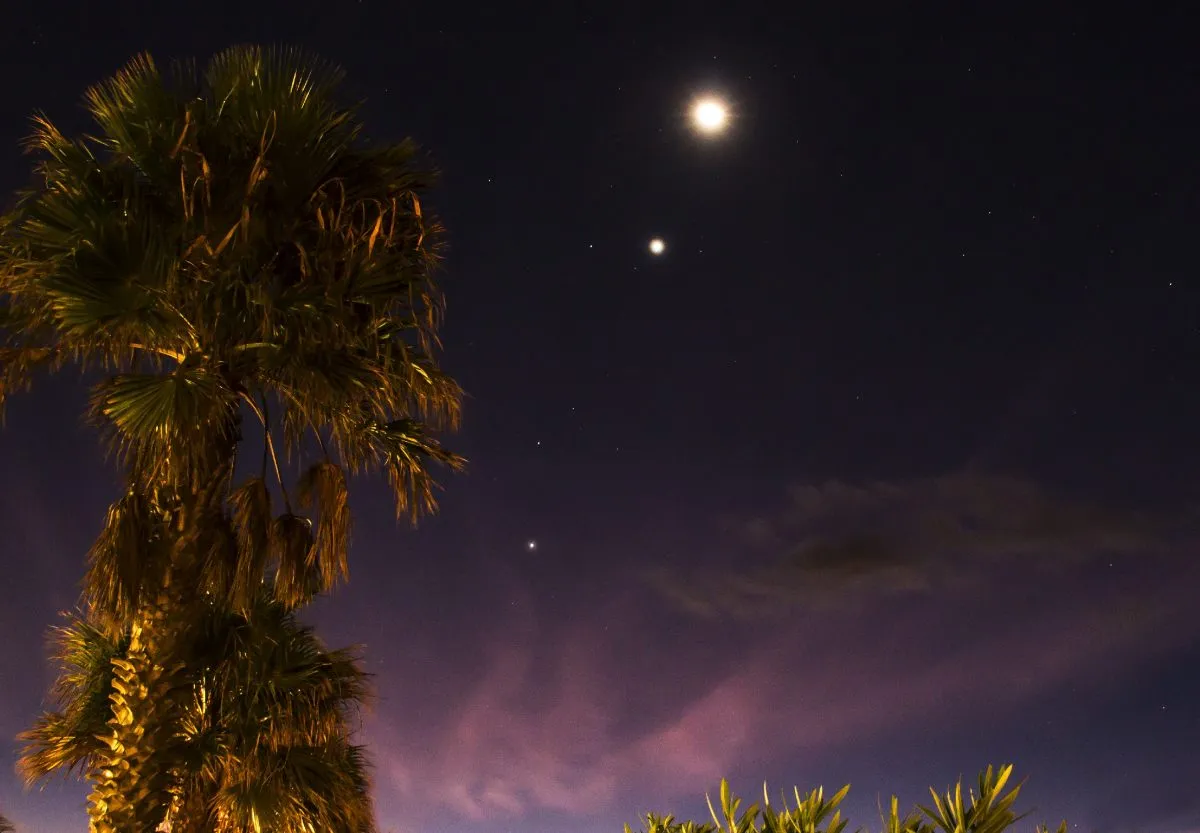In astronomy, generally speaking, we call any meeting of two bodies visible in the night sky a 'conjunction', but a 'massing' is something slightly different.
You may have heard of a conjunction of the Moon and Venus, for example. This simply means that the Moon and Venus are close together in the night sky.

Of course, Venus and the Moon aren't really any closer together than they normally are, in terms of their actual positions in the Solar System.
This is all a matter of perspective.
The night sky appears as a 2D blanket above our heads, so objects that appear to be beside one another may actually be separated by millions of lightyears.
You may also see more than two bright bodies together in the night sky.
You might, for example, see Venus, Jupiter and Mars close to the Moon.

Conjunction vs massing
The astronomical term to describe a get-together of three or more celestial bodies in the sky is a 'massing'.
However, the term 'massing' seems a little old fashioned these days, and it's difficult to remember when we last heard the term used in casual amateur astronomy conversation!
If you do manage to spot a massing of planets and the Moon in the night sky, these are great naked-eye events.

But if you have a good pair of binoculars or a telescope, take the opportunity to observe these bodies a little closer.
See if you can discern, for example, Jupiter's belts and zones and Galilean Moons, Saturn's rings or perhaps even Venus's beautiful crescent phases.
A massing in astronomy is one of those wonderfully arresting sights that is a reminder of the beauty of the night sky.
And if you manage to photograph a massing, be sure to send us your pictures and they could end up in a future issue of BBC Sky at Night Magazine.
